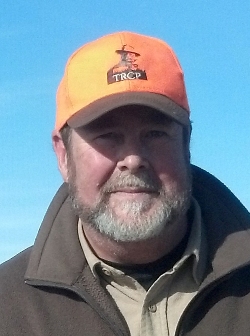
With the 2014 Farm Bill nearly half-way implemented — with mixed results for wildlife — NBCI is already thinking about how to make the next Farm Bill more bobwhite friendly!
While strides have been made to benefit some wildlife using conservation programs, biologists continue to document the decline of upland game birds throughout North America due in large part to agricultural development. Upland game bird populations are declining due to large-scale land use changes that are having profound impacts on wildlife habitat conditions on private farms, rangelands, and forests.
In fact, federal agriculture programs may be contributing to the decline of upland game birds by promoting or supporting large-scale land use changes in rural landscapes over many decades. However, we believe the decline of upland game birds may be reversed or mitigated while maintaining desirable agricultural production through (1) minimizing federal agriculture policies, actions and incentives that negatively impact upland bird habitats, and (2) better targeting and application of conservation practices to enhance native grassland and forest habitats. The next few decades may afford the best opportunity for federal policy to halt the declines of upland wildlife species, stem localized extinctions, and restore populations enough to avoid widespread extirpations of upland game birds.
To address these declines, the National Bobwhite Conservation Initiative (NBCI) plans to team with the National Wild Turkey Federation (NWTF) and Theodore Roosevelt Conservation Partnership (TRCP) on a study to document the long-term impacts of federal programs on upland game bird habitats on non-industrial, private working lands. This information is needed to better inform agricultural program decisions for the Farm Bill, due for Congressional re-authorization in 2018. Upland game birds provide a unique lens through which to study the effects of rural land use changes, as (1) this group of birds does not migrate but spends their entire lives dependent on one relatively small area of land, and (2) bird population health and habitat conditions are often well-recorded by state game departments.
The study will describe the direct and indirect effects of federal agriculture programs on private working lands that produce renewable commodities affecting native grassland habitats, upland forest habitats, and populations of upland game bird species, including quail, turkeys, pheasants, and grouse. The study will address commodity, conservation, and crop insurance programs, practices, policies, and infrastructures of the USDA Farm Service Agency, Natural Resources Conservation Service, Risk Management Agency, and Extension Service. The study will consider the history of agriculture policy and its impact on upland habitats, from the origins of federal support for commodity agriculture to the present. In so doing, it will specifically look into the wildlife effects of USDA commodity, working lands, conservation reserve, and crop insurance programs which directly or indirectly incentivize upland habitat loss on native grassland, rangeland, forestland and cropland. In addition the study will also consider the efficacy of the department’s easement and partnership programs which are intended to protect, restore, and enhance wildlife habitat.
The final report will quantify the nature and extent of how federal agricultural programs have directly and indirectly affected quail and other upland game birds and their habitat on the native grasslands, rangelands, forests, and croplands of the United States. The study is sorely needed to inform members of Congress as they make the critical decisions regarding how future federal agriculture policy and funding will continue or reverse the decline of bobwhites and other upland birds across the rural American landscape.







